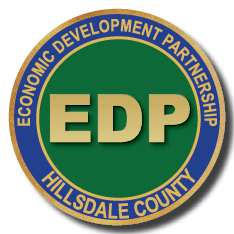James Fallows made a 54,000-mile journey around America in a single-engine plane. After visiting many cities, he had developed an informal checklist of the traits that distinguished a place where things seemed to work. These items are obviously different in nature, most of them are subjective, and some of them overlap. But if you tell him how a town measures up based on these standards, he can guess a lot of other things about it. In his experiences, these things were true of the cities, large or small, that were working best:
1. Divisive national politics seem a distant concern.
Overwhelmingly the focus in successful towns was not on national divisions but on practical problems that a community could address. The more often national politics came into local discussions, the worse shape the town was in.
2. You can pick out the local patriots.
A standard question they’d ask soon after arrival was “Who makes this town go?” The answers varied widely. Sometimes it was a mayor or a city-council member. Sometimes it was a local business titan or real-estate developer. Sometimes a university president or professor, a civic activist, an artist, a saloon-keeper, a historian, or a radio personality. What mattered was that the question had an answer. And the more quickly it was provided, the better shape the town was in.
3. “Public-private partnerships” are real.
Fallows explains that in successful towns, people can point to something specific and say, This is what a partnership means. In Holland, Michigan, the family-owned Padnos scrap-recycling company works with a local ministry called 70×7 Life Recovery to hire ex-prisoners who would otherwise have trouble reentering the workforce. In Fresno, California, a collaboration among the city, county, and state governments; local universities; and several tech start-ups trains high-school dropouts and other unemployed people in computer skills. The more specifically a community can explain what their public-private partnerships mean, the better off the city is.
4. People know the civic story.
America has a “story,” which everyone understands even if only to say it’s a myth or a lie.
5. They have a downtown.
Most of the cities they visited were pouring attention, resources, and creativity into their downtown. The Main Street America project, from the National Trust for Historic Preservation, has coordinated downtown-revival projects in some 2,000 communities. Downtown ambitions of any sort are a positive sign, and second- and third-floor apartments and condos over restaurants and stores with lights on at night suggest that the downtown has crossed a decisive threshold and will survive.
6. They are near a research university.
Research universities have become the modern counterparts to a natural harbor or a river confluence. In the short term, they lift the economy by bringing in a student population. Over the longer term, they transform a town through the researchers and professors they attract: When you find a Chinese or German physicist in the Dakotas, or a Yale literature Ph.D. in California’s Central Valley, that person probably works for a university. Research universities have become powerful start-up incubators.
7. They have, and care about, a community college.
Not every city can have a research university. Any ambitious one can have a community college.
Potentially offering a connection to high-wage technical jobs for people who might otherwise be left with no job or one at minimum wage.
They saw a number of schools that were clearly forces in the right direction. The more often and more specifically they heard people talk about their community college, the better they felt about the direction of that town.
8. They have unusual schools.
They often asked what the most distinctive school to visit at the K–12 level was in the city they were in. If four or five answers came quickly to mind, that was a good sign.
The examples people suggested ranged widely. Some were “normal” public schools. Some were charters. Some emphasized career and technical training. Some were statewide public boarding schools. Some were religious or private schools. The common theme was intensity of experimentation.
9. They make themselves open.
Fallows explains that every small town in America has thought about how to offset the natural brain drain that has historically sent its brightest young people elsewhere. The same emphasis on inclusion that makes a town attractive to talented outsiders increases its draw to its own natives.
10. They have big plans.
On his journey he found that few national politicians pretend to offer a long-term vision anymore. When a mayor or city-council member shows a map of how new downtown residences will look when completed, or where the new greenway will go was a good sign. Cities still make plans, because they can do things.
11. They have craft breweries.
One final marker that Fallows highlights, perhaps the most reliable: A city on the way back will have one or more craft breweries, and probably some small distilleries too. A town that has craft breweries also has a certain kind of entrepreneur, and a critical mass of mainly young customers. You may think he’s joking, but try to find an exception.
You can view Fallows entire article here.
Source: SPARK






